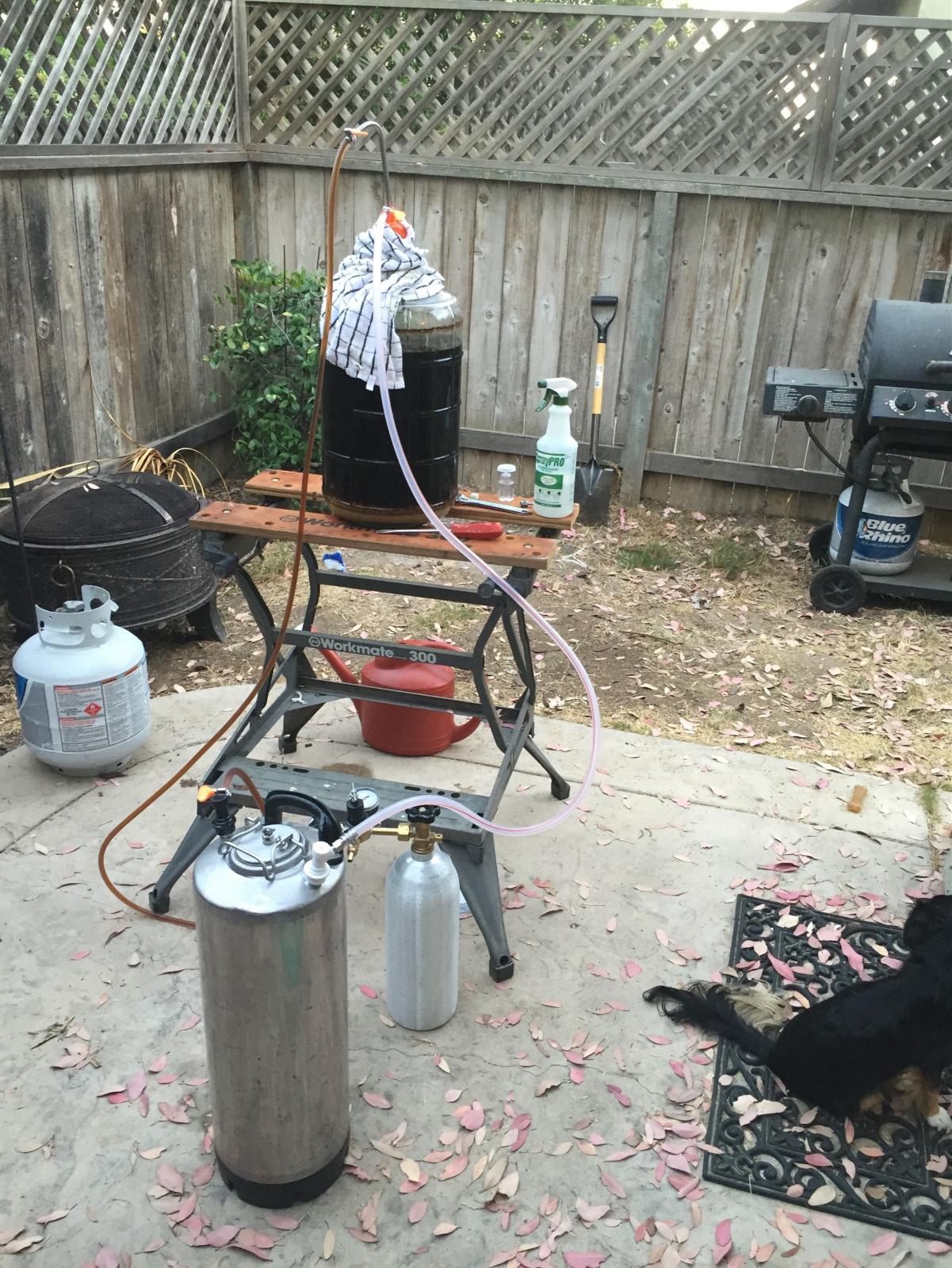Incubus2112
Active Member
- Joined
- May 15, 2017
- Messages
- 40
- Reaction score
- 15
So I started brewing maybe 3 months ago. I've done an extract brew, and about 3 all grain brews. All came out better than I had hoped. That is until my most recent, fourth brew.
I was just coming off my best brew yet with my last 5 gallons of California common. Was the clearest, best tasting beer i had made to date. To boot, I had just received my chest freezer/fermentation chamber to use and I was STOKED to see how controlled fermentation chamber temperatures affected this beer.
I was also stoked to use my new 7 gallon kegco glass carboy with straps.
Couple difficulties aroused from using it, I am afraid, but I am nearly certain they had nothing to do with the terrible taste that the final product came out with. First of all, I couldn't get the airlock working as it came so I made do without the benefit of those reassuring bubbles blurping at me. I kept it at nearly 60 degrees throughout fermentation as the Wyeast 2112 packet indicated a 58-68 degree range for the yeast.
Fast forward to day before yesterday when I got home from Tahoe to rack the beer to a keg, cold crash, and carbonate for drinking.
Here is where stuff spit the bit. I had lost my trusty kit-included siphon in the move, so I had to purchase one on-the-fly from amazon. Was shorter, and less than $10. Not terrible reviews, but I turned it terrible.
Started siphoning my beer into the keg and the siphon tube is about half empty of beer and started bubbling air into the feed.
Tried to stop/restart the process to get it going and it just kept going back to bubbling.
Got my wife to come out and help me as now I had nearly half my keg filled with oxygenated beer. Wife came out, stopped the siphon, pulled the tube from the siphon tube, and re-inserted into beer to create a straight-liquid siphon for the last 1/2 of the keg.
There was some gunk that got sucked into the keg as I didn't even have enough to fill the corny *shakes fist*, but I am nearly positive that the entire batch is ruined, despite the first beer tasting honestly terrible and undrinkable.
OXYGEN KILLS!!
I was just coming off my best brew yet with my last 5 gallons of California common. Was the clearest, best tasting beer i had made to date. To boot, I had just received my chest freezer/fermentation chamber to use and I was STOKED to see how controlled fermentation chamber temperatures affected this beer.
I was also stoked to use my new 7 gallon kegco glass carboy with straps.
Couple difficulties aroused from using it, I am afraid, but I am nearly certain they had nothing to do with the terrible taste that the final product came out with. First of all, I couldn't get the airlock working as it came so I made do without the benefit of those reassuring bubbles blurping at me. I kept it at nearly 60 degrees throughout fermentation as the Wyeast 2112 packet indicated a 58-68 degree range for the yeast.
Fast forward to day before yesterday when I got home from Tahoe to rack the beer to a keg, cold crash, and carbonate for drinking.
Here is where stuff spit the bit. I had lost my trusty kit-included siphon in the move, so I had to purchase one on-the-fly from amazon. Was shorter, and less than $10. Not terrible reviews, but I turned it terrible.
Started siphoning my beer into the keg and the siphon tube is about half empty of beer and started bubbling air into the feed.
Tried to stop/restart the process to get it going and it just kept going back to bubbling.
Got my wife to come out and help me as now I had nearly half my keg filled with oxygenated beer. Wife came out, stopped the siphon, pulled the tube from the siphon tube, and re-inserted into beer to create a straight-liquid siphon for the last 1/2 of the keg.
There was some gunk that got sucked into the keg as I didn't even have enough to fill the corny *shakes fist*, but I am nearly positive that the entire batch is ruined, despite the first beer tasting honestly terrible and undrinkable.
OXYGEN KILLS!!




